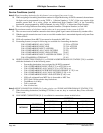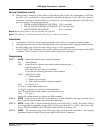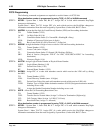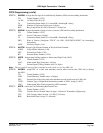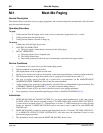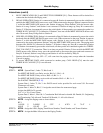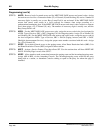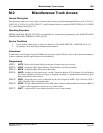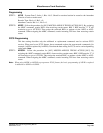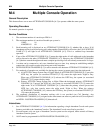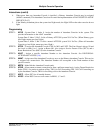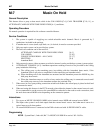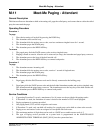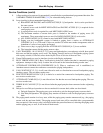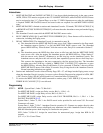
NEAX2400 IPX Feature Programming Manual
Page 468 NDA-24297, Issue 1
M-3 Miscellaneous Trunk Restriction
M-3 Miscellaneous Trunk Restriction
General Description
This feature provides for certain stations and certain dial-repeating TIE trunks to be denied access to particular trunk
groups, such as FX [F-2], WATS [W-1], CCSA [C-14], TIE LINE [T-3], Exchange Network, DICTATION [D-3]
or PAGING [P-1].
Operating Procedure
MISCELLANEOUS TRUNK RESTRICTION is accomplished via system data programming at the
MAINTENANCE ADMINISTRATION TERMINAL (MAT) [M-18].
Service Conditions
1. Restricted call attempts can be either:
a.) intercepted by the Attendant,
b.) reorder tone can be initiated back to the originating user,
c.) user can be connected to an announcement informing the user of the restricted call attempt, or
d.) prompted for Authorization Code.
2. Station line access to a given miscellaneous trunk group is controlled by assigning a Route Restriction
Class (RSC) to each line. There can be a maximum of 15 different RSCs (RSC1-15) per TENANT [T-12],
each of which can be programmed to restrict an assigned station from none, one, or more than one
miscellaneous trunk group.
3. If the user's class of service allows outgoing route completion via the ATTENDANT CONSOLE [A-3],
the user can dial “0” to reach the Attendant for completion of miscellaneous trunk calls.
4. The CALL TRANSFER - ALL CALLS [C-11] feature will operate as follows:
a.) if the restricted station is the controller, this station cannot add a trunk from which this station is
restricted.
b.) if the restricted station line is not the controller, the controller cannot connect the restricted station
line to a trunk from which the station is normally restricted.
5. Two outgoing trunk group restriction tables are provided per system. The Direct Dial Access table is
indexed when a user dials the trunk group access code and the ATTENDANT CONSOLE [A-3] table is
indexed on Attendant completed calls. The restriction options per RSC can differ per table, thus allowing
Attendant completion of outgoing calls for restricted stations.
6. NIGHT SERVICE [N-1, 2]: Restrictions can be changed for a given station when the system is switched
to the Night mode of operation.
7. CALL TRANSFER - ALL CALLS [C-11]: If a restricted user calls another station, the called station
cannot use the CALL TRANSFER feature to connect the calling station to a trunk group to which the
restricted station is denied dial access. If transfer is attempted, the controlling station is rung back.
8. TIE LINE ACCESS [T-3]: If the user accesses a TIE trunk at a distant PBX, access to outside exchanges
can only be controlled by the distant PBX.
Interactions
If other services are being used [such as SMDR, toll restriction, and/or LCR (S)], refer to those feature descriptions,
as other commands may be required that are not listed.



